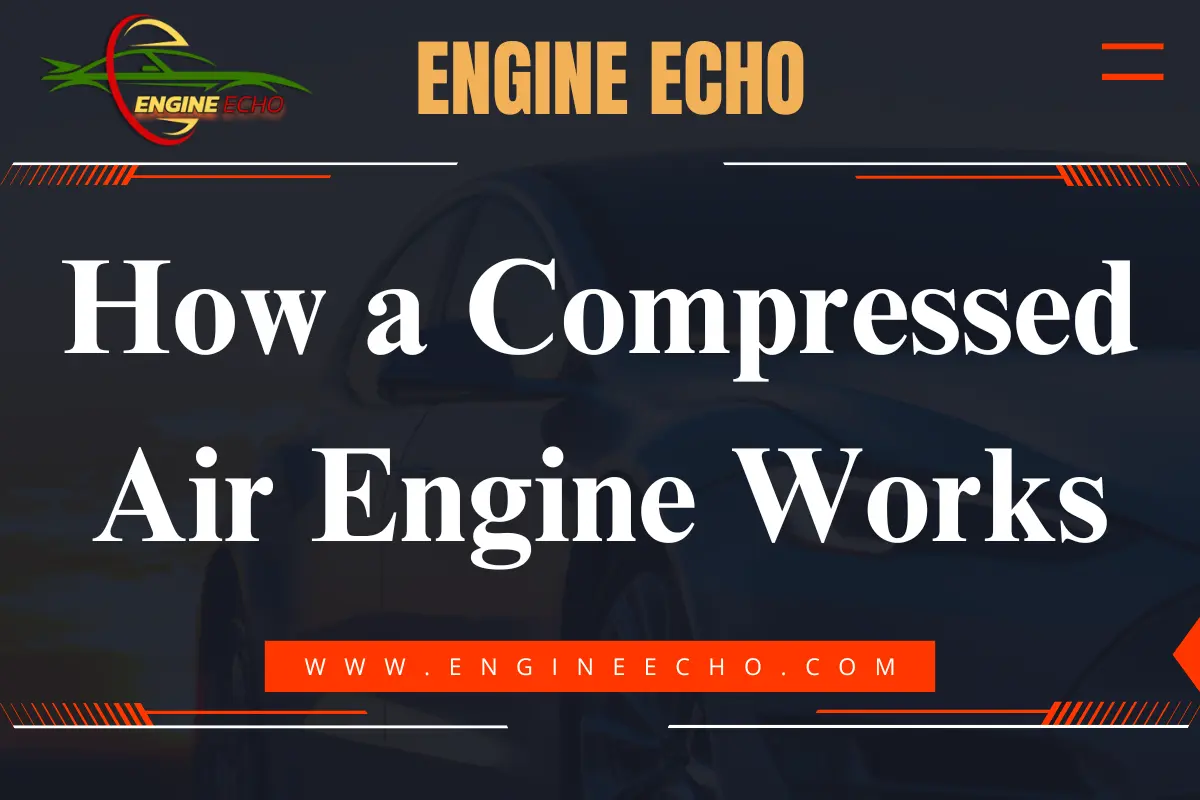How a Compressed Air Engine Works

Key Takeaway
Compressed air engines are an exciting and eco-friendly alternative to traditional combustion engines. They tap into the energy stored in compressed air to generate mechanical power. As we look towards the future, these engines have the potential to revolutionize various industries while giving us cleaner, more efficient energy solutions.
Introduction
Have you ever thought about how the air we breathe could power our vehicles? It’s pretty amazing! Compressed air engines are fascinating machines that turn that air into mechanical power. This technology is gaining traction because it offers a greener alternative to conventional combustion engines. Let’s dive into how these engines work and explore the many benefits they bring to the table.
How a Compressed Air Engine Works
A compressed air engine uses compressed air to create motion. Unlike traditional engines that burn fuel and spew out harmful emissions, these engines rely on air expansion to generate power. Just imagine—a machine that runs on air! It’s a bit like a breath of fresh air for our environment.
The Basic Principles of Operation
- Compression of Air: The journey begins with air being compressed in a storage tank. This is done using an air compressor, which increases the pressure of the air and stores it for later use. Picture this: you’re at a construction site, and the air compressor is humming away, filling up that tank with potential energy. It’s like a giant balloon waiting to be released!
- Release of Air: When the engine is ready to work, the compressed air is released into a cylinder. As the air expands, it pushes against a piston inside the cylinder. I remember seeing this in action when a friend was using an air-powered tool—it’s fascinating how something as simple as air can create such power.
- Mechanical Movement: The force from the expanding air drives the piston, creating linear motion. This motion can be converted into rotational movement through a crankshaft or gears. It’s the same principle that traditional engines use but without the noise and emissions—talk about a win-win!
- Exhaust: After the air has done its work, it is released into the atmosphere, often at a lower pressure. Unlike exhaust from combustion engines, this air is clean and contains no harmful pollutants. Just think about it: no black smoke or fumes—just good ol’ air.
Detailed Components of a Compressed Air Engine
To understand how a compressed air engine operates, let’s look at its key components:
- Air Compressor: This is the initial step in the process. The compressor draws in ambient air and compresses it into a storage tank. The size of the compressor can influence how quickly air is stored, which is critical in applications where speed is essential.
- Storage Tank: The compressed air is stored in a tank designed to withstand high pressure. The size of the tank influences how much energy can be stored. Larger tanks can provide more power and longer run times for the engine. I often wonder how much energy is waiting inside these tanks, ready to unleash its potential.
- Cylinder and Piston: These are critical components where the actual mechanical work is done. The piston moves back and forth inside the cylinder, driven by the expanding air. The design of the cylinder and piston can vary depending on the specific application and desired performance.
- Valves: The engine uses a system of valves to control the flow of compressed air into and out of the cylinder. These valves must be precisely engineered to ensure efficient operation and avoid leaks.
- Exhaust System: This component ensures that the spent air is expelled from the engine without causing back pressure, which could hinder performance.
Advantages of Compressed Air Engines
Compressed air engines have several advantages over traditional combustion engines:
- Environmentally Friendly: Since they do not burn fuel, compressed air engines produce no harmful emissions. This characteristic makes them an appealing option for reducing air pollution, especially in urban areas. I can’t help but think about the impact this could have on our air quality—imagine cities filled with clean air!
- Efficiency: They can be highly efficient in converting stored energy into usable power. Compressed air can be stored for long periods without significant energy loss, making it practical for various applications.
- Low Operating Costs: The cost of electricity used to compress air is generally lower than that of gasoline or diesel fuel. Additionally, maintenance costs are often lower because these engines have fewer moving parts and do not require oil changes or other traditional maintenance tasks.
- Safety: Compressed air is less hazardous than gasoline or diesel. There is no risk of explosion or fire, making compressed air engines a safer alternative for certain applications.
- Versatility: Compressed air engines can be used in various fields, including transportation, manufacturing, and energy storage, making them adaptable to many industries.
Challenges and Limitations
While there are many advantages, compressed air engines also face challenges:
- Energy Density: Compressed air has a lower energy density compared to fossil fuels. This means that while they are efficient for certain applications, they may not provide the same range or power output as traditional engines.
- Infrastructure: The current infrastructure for compressed air storage and distribution is not as developed as that for gasoline or electricity. Widespread adoption of compressed air technology would require significant investment in new infrastructure.
- Noise: Compressed air engines can be noisy during operation, which may be a concern in residential areas or noise-sensitive environments.
- Thermal Efficiency: The process of compressing air generates heat, and when the air expands in the engine, it can cool down significantly. This can reduce the overall efficiency of the system, as some energy is lost in the process.
Applications of Compressed Air Engines
Compressed air engines have various applications, including:
- Transportation: Some companies are developing air-powered vehicles that can run entirely on compressed air. These vehicles aim to provide a clean alternative for short-distance travel. For example, prototypes of air-powered cars have been tested, showing promising results in terms of efficiency and emissions. I can’t wait to see these on the roads!
- Tools and Machinery: Air compressors are already widely used in construction and manufacturing, where compressed air powers tools like drills and wrenches. Many industries rely on pneumatic systems for various applications, from assembly lines to maintenance work. Having used air tools myself, I appreciate how effective and powerful they can be.
- Energy Storage: Compressed air can also be part of systems that store energy, helping to balance supply and demand in power grids. This technology, known as compressed air energy storage (CAES), can store excess energy produced during low-demand periods and release it during peak demand.
- Industrial Applications: In manufacturing, compressed air engines can drive conveyor belts, operate robotic arms, and power various equipment. Their ability to provide clean energy makes them suitable for food processing, pharmaceuticals, and other industries that require high hygiene standards.
- Recreational Vehicles: Some companies are exploring the use of compressed air engines in recreational vehicles, such as go-karts and scooters, offering a fun and eco-friendly way to enjoy leisure activities.
Future of Compressed Air Engines
The future of compressed air engines looks promising, especially as the world shifts towards sustainable energy solutions. Here are some trends and developments to watch:
- Research and Development: Ongoing research is focused on improving the efficiency and power output of compressed air engines. Innovations in materials and engineering designs can help overcome some of the current limitations.
- Integration with Renewable Energy: Compressed air systems can be integrated with renewable energy sources, such as solar or wind. For instance, excess energy generated during peak production can be used to compress air, creating a sustainable energy storage solution.
- Increased Adoption in Urban Transport: As cities seek to reduce pollution and improve air quality, compressed air engines may find increased adoption in urban transport systems, such as buses and trams.
- Smart Technology: The integration of smart technology and automation can enhance the efficiency and usability of compressed air systems. Sensors and data analytics can optimize performance and monitor system health.
Conclusion
Compressed air engines represent an innovative approach to generating power. By harnessing the energy in compressed air, these engines offer a cleaner, more sustainable option for many applications. As technology advances, we may see even more widespread use of compressed air engines in our daily lives, helping to reduce our reliance on fossil fuels and lower our environmental impact.
So, what’s the bottom line? Compressed air engines could really change the game. They offer a unique solution to the growing demand for clean energy sources and have the capacity to transform how we think about power generation and consumption. As we all strive for a greener future, I wholeheartedly recommend keeping an eye on compressed air technology. Its promise of efficiency and sustainability could lead us toward a cleaner, more enjoyable world. Let’s support this movement and advocate for innovative solutions that can make a difference.
FAQs
1. What are the main advantages of compressed air engines?
Compressed air engines are eco-friendly, produce no harmful emissions, have lower operating costs, and are generally safer than traditional combustion engines. They also require less maintenance due to fewer moving parts.
2. How do compressed air engines work?
These engines work by compressing air in a storage tank, which is then released into a cylinder. The expanding air pushes against a piston, creating mechanical movement that can be converted into rotational energy.
3. Are there any challenges with using compressed air engines?
Yes, challenges include lower energy density compared to fossil fuels, limited infrastructure for storage and distribution, noise during operation, and thermal efficiency issues.
4. Where are compressed air engines commonly used?
Compressed air engines are used in various applications, including transportation (air-powered vehicles), construction (pneumatic tools), manufacturing (driving machinery), and energy storage systems.
5. What is the future of compressed air technology?
The future looks promising, with ongoing research focused on improving efficiency, integrating with renewable energy sources, and increasing adoption in urban transport systems. As technology advances, compressed air engines could play a significant role in sustainable energy solutions.
Thanks for checking out this article on EngineEcho.com! Hope you found this article: "How a Compressed Air Engine Works" helpful! If you liked it and want to dive into more car engine topics, head over to our homepage. There's always something new to discover in the world of engines. Enjoy your reading journey!
Check out our previous article: Honda Check Engine Light: What It Means






